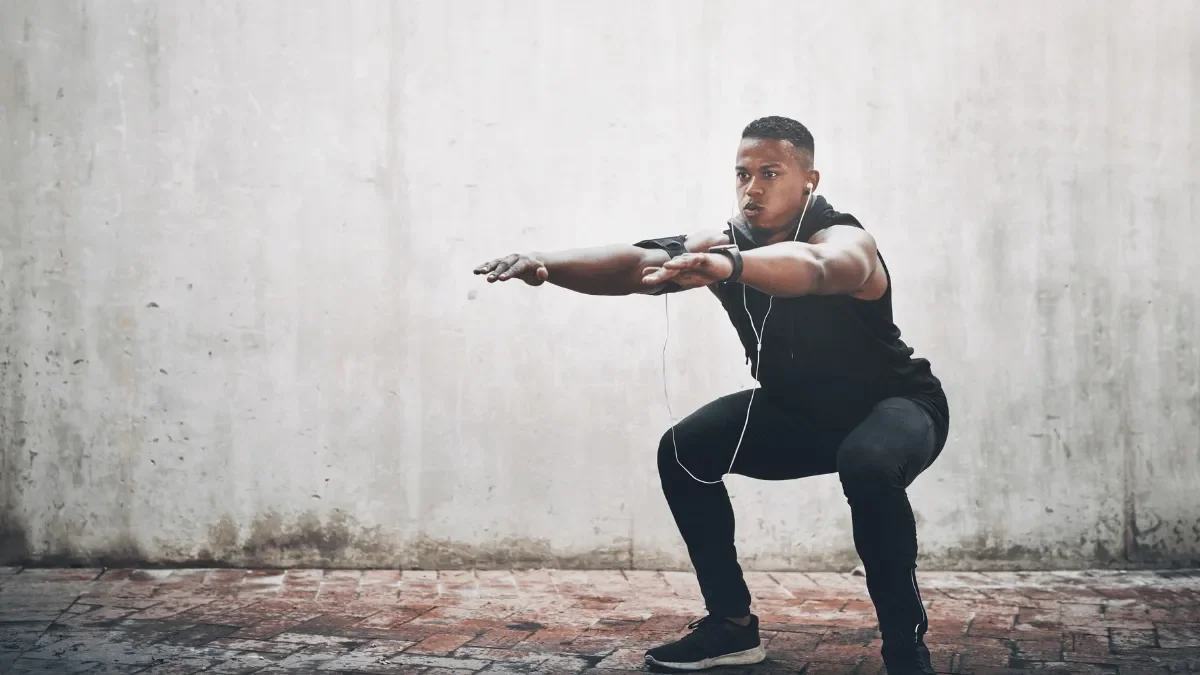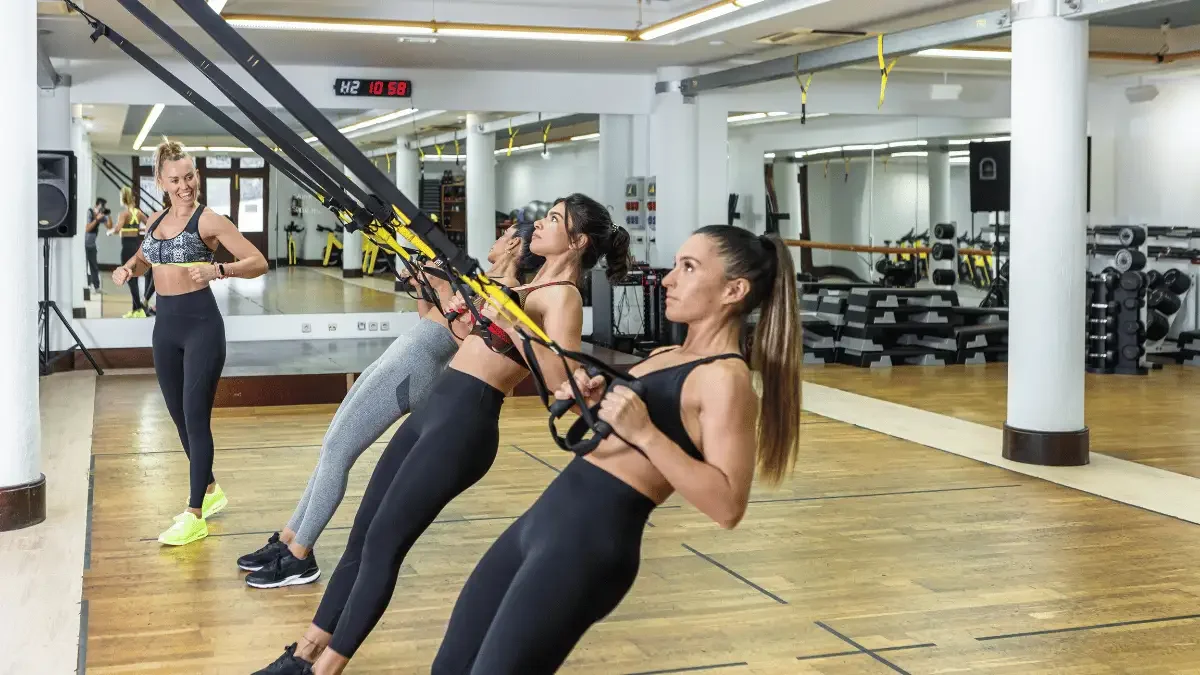Functional Fitness: How to Build Real Strength for Everyday Life
Intro
Many people train to look better, but the real goal of fitness should be to move and live better. Whether you are carrying groceries, climbing stairs, or playing with your kids, your body relies on a combination of balance, strength, and coordination. The problem is that traditional gym routines often isolate muscles rather than training them to work together.
That is where functional fitness comes in. At Fight Gravity Fitness, functional training is at the heart of every personalized program. It is not about chasing numbers on a barbell. It is about building a body that moves efficiently, performs confidently, and feels strong every day.
Meet our Denver
Personal Trainers
Also Read:
TL;DR
Functional fitness strengthens your body for real-life movement. It improves balance, coordination, and strength through exercises that mimic daily activities. This approach helps you move better, reduce injury risk, and gain lasting functional strength.
Understanding Functional Fitness and Why It Matters
Functional fitness is a method of training that focuses on improving how your body performs daily tasks. Rather than working muscles in isolation, functional exercises train movement patterns. They help your body work as one integrated system, improving the way you bend, twist, lift, and move.
Traditional workouts might make you stronger, but that strength does not always translate to real life. For example, lifting a barbell in a fixed motion does not necessarily help you carry heavy groceries or get up from the floor more easily. Functional fitness changes that by improving mobility, coordination, and strength that can be applied to your everyday routine.
This approach is also foundational for preventing injury. By strengthening stabilizing muscles and enhancing balance, functional training supports your joints and spine. It helps you move with better posture, reducing pain from long hours at a desk or repetitive motions at work.
Why Functional Fitness Is Essential for Everyday Health
Functional fitness offers benefits that go far beyond appearance. Here are some of the key advantages:
Improved Mobility and Flexibility
Functional fitness improves joint mobility, allowing you to move more freely and comfortably. Exercises emphasize full range of motion, which helps reduce stiffness and promotes healthy posture.
Better Strength for Real Tasks
These workouts focus on compound movements that build usable strength. Whether you are picking up a child, hiking, or lifting boxes, functional fitness gives you the power and endurance to do it with ease.
Enhanced Balance and Stability
Training the core and stabilizing muscles enhances coordination. As balance improves, it becomes easier to prevent falls, move confidently, and perform dynamic activities without strain.
Injury Prevention
By correcting movement imbalances and improving body awareness, functional training minimizes the risk of injuries that come from weak stabilizers or poor form.
As Fight Gravity Fitness founder Nick Butler says, “Strength without movement quality is incomplete. Functional fitness builds both.”
Functional Fitness Exercises to Build Strength and Stability
The best functional fitness exercises mimic the movements your body performs every day. Here are five essential examples that you can include in your routine.
1. Squats and Lunges
Squats and lunges strengthen your legs and hips, improving stability and coordination. These movements help with standing, climbing stairs, and maintaining balance. Focus on proper form by keeping your knees aligned with your toes and your core engaged.
2. Deadlifts and Hip Hinge Movements
Deadlifts are one of the most effective exercises for developing total-body strength. They train your posterior chain, which includes the glutes, hamstrings, and lower back. Proper hip hinge technique helps you lift safely in everyday life, such as when moving heavy objects.
3. Push-Ups and Pulling Exercises
Upper-body pushing and pulling exercises strengthen the chest, shoulders, and back. Push-ups, rows, and resistance band pulls enhance posture and balance out muscle imbalances caused by sitting.
4. Planks and Core Stability Work
A strong core supports your entire body. Planks, bird dogs, and rotational exercises train your core to stabilize movement, improve posture, and prevent lower back pain.
5. Loaded Carries
Exercises like farmer’s carries or suitcase carries challenge your grip, core, and endurance. They replicate real-life activities such as carrying groceries or luggage. Loaded carries develop both strength and control.
These movements form the foundation of functional training. They can be scaled to any fitness level by adjusting resistance, duration, or complexity.
How Functional Fitness Gyms Help You Train Smarter
Functional fitness gyms focus on movement quality, not just the number of reps or the amount of weight lifted. They are designed around open space, mobility tools, and versatile equipment like kettlebells, resistance bands, and TRX systems.
At Fight Gravity Fitness, workouts are built around functional strength and mobility patterns. Each session combines warm-ups, compound lifts, and movement drills to create a balanced routine that supports real-world performance.
Trainers guide every step, ensuring proper form and safe progression. This approach builds confidence and consistency, two essential elements for lasting results.
If you want to train smarter and move better, functional fitness gyms like Fight Gravity Fitness provide the perfect environment to do so.
Functional Fitness for Every Body and Lifestyle
Functional fitness is suitable for everyone, regardless of age or experience. The focus on movement patterns makes it adaptable for different goals and needs.
Beginners benefit from learning safe, effective techniques that build confidence and prevent injury.
Athletes use functional training to enhance performance, power, and coordination across sports.
Busy professionals can improve posture and reduce pain caused by hours of sitting.
Older adults gain strength and stability that supports balance, mobility, and independence.
Functional fitness meets you where you are and helps you progress at your own pace. It is fitness that evolves with your life.
How to Get Started with Functional Fitness
If you are new to this type of training, the best place to start is with a professional assessment or personal training consultation. This ensures your exercises match your current mobility, strength, and goals.
Begin with two or three functional workouts per week that combine strength, mobility, and balance training. Focus on form over intensity and prioritize consistency.
At Fight Gravity Fitness, trainers design individualized programs that teach you how to move safely and effectively. You will build a foundation of mobility and strength that carries over into every part of your life.
Ready to train with purpose? Visit Fight Gravity Fitness to learn how functional fitness can help you move better, feel stronger, and live without limits.
Top 3 Reasons to Try Functional Fitness Today
Move Better: Improve flexibility and control for daily tasks.
Build Strength That Matters: Train for performance, not just appearance.
Prevent Injuries: Strengthen stabilizers and improve coordination.
Conclusion: Functional fitness is more than a workout. It is a blueprint for better movement and a stronger, more capable body that supports your life outside the gym.
FAQs About Functional Fitness
1. What is functional fitness and why is it important?
Functional fitness focuses on improving how your body moves and performs in daily life. It builds strength, mobility, and coordination that directly enhance real-world activities and help prevent injury.
2. Can beginners do functional fitness?
Yes. Functional fitness is ideal for beginners because it starts with fundamental movements. Trainers can modify exercises to suit your current ability and gradually increase intensity as you progress.
3. What are examples of functional fitness exercises?
Squats, lunges, deadlifts, push-ups, planks, and carries are the most common functional fitness exercises. They target multiple muscles at once and improve strength and stability.
4. Do I need equipment for functional fitness?
Not necessarily. Many functional exercises can be performed using body weight, but equipment such as kettlebells, resistance bands, or medicine balls can help increase variety and challenge.
5. What should I look for in functional fitness gyms?
Choose a gym that focuses on movement quality and personalized training.Fight Gravity Fitness specializes in functional fitness programs that emphasize proper form, mobility, and long-term results.
Nicholas Butler
Founder, Fight Gravity Fitness
Nick Butler is a passionate fitness professional who believes that better movement leads to a better life. As the founder of Fight Gravity Fitness, he specializes in helping busy professionals build strength, restore mobility, and enjoy an active, pain-free lifestyle. Nick holds certifications as a NASM Certified Personal Trainer, TRX Certified Instructor, Silver Sneakers Certified, and is CPR Certified. With years of experience and a focus on functional movement, Nick brings a supportive, practical approach to fitness that gets results without the hype.





